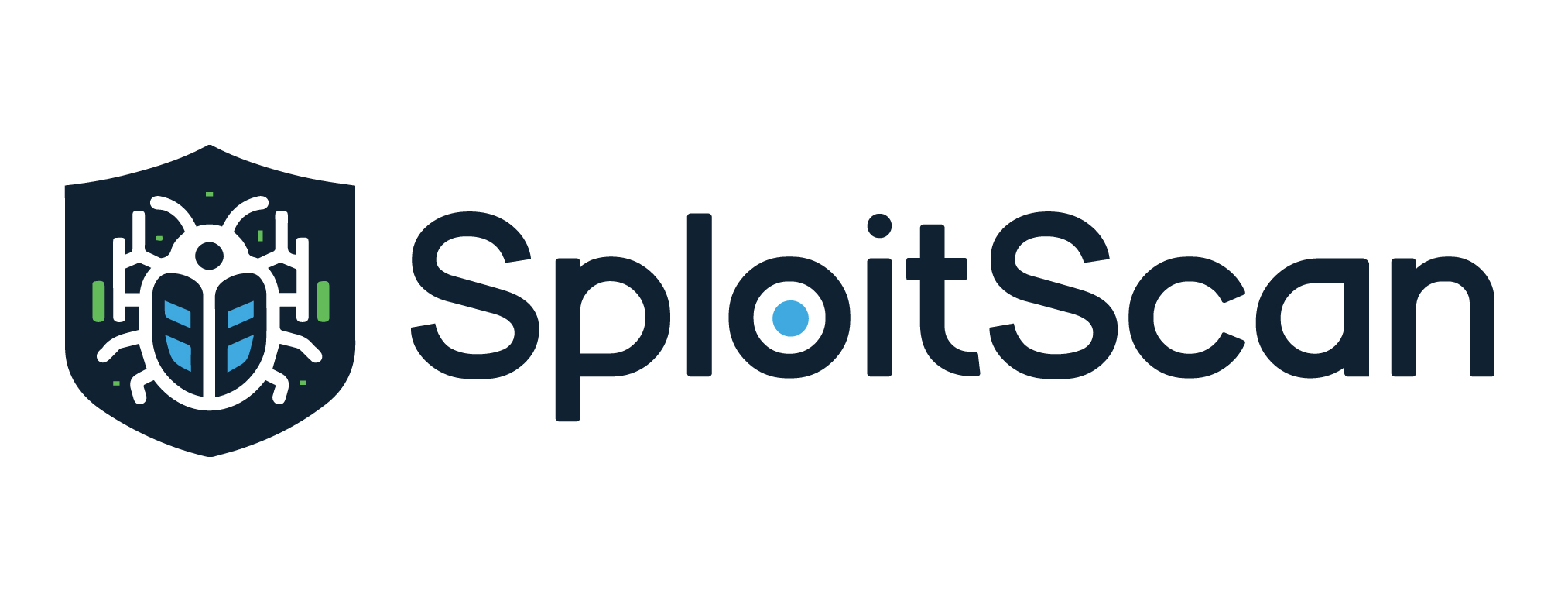
SploitScan 是一款功能强大且用户友好的工具,旨在简化识别已知漏洞的利用及其各自的利用概率的过程。使网络安全专业人员能够快速识别和应用已知的漏洞并进行测试。对于寻求增强安全措施或针对新出现的威胁制定强大的检测策略的专业人士来说,它尤其有价值。
描述
特征
支持的漏洞利用数据库
支持的漏洞扫描程序导入
安装
用法
人工智能驱动的风险评估
补丁优先系统
贡献
作者
变更日志
参考
CVE 信息检索:从国家漏洞数据库中获取 CVE 详细信息。
EPSS 集成:包括利用预测评分系统 (EPSS) 数据,提供 CVE 利用可能性的概率评分,有助于确定优先级。
公共漏洞聚合:收集公开可用的漏洞,增强对漏洞的理解。
CISA KEV :显示 CVE 是否已列在 CISA 的已知利用漏洞 (KEV) 中。
AI 支持的风险评估:利用 OpenAI 提供详细的风险评估、潜在攻击场景、缓解建议和执行摘要。
HackerOne 报告:显示 CVE 是否在 HackerOne Bug Bounty 计划中使用,包括其总排名和严重性分布。
修补优先级系统:根据各种因素(包括公共漏洞利用可用性)评估并分配修补优先级。
多 CVE 支持和导出选项:在一次运行中支持多个 CVE,并允许将结果导出为 HTML、JSON 和 CSV 格式。
漏洞扫描程序导入:从流行的漏洞扫描程序导入漏洞扫描并直接搜索已知漏洞。
精细方法选择:仅选择特定方法(例如cisa 、 epss 、 hackerone 、 ai等),让您可以控制要检索的数据。
用户友好的界面:易于使用,提供清晰简洁的信息。
全面的安全工具:快速安全评估和随时了解最新漏洞的理想选择。
GitHub
利用数据库
VulnCheck (需要免费的VulnCheck API 密钥)
数据包风暴
细胞核
内瑟斯 (.nessus)
Nexpose (.xml)
OpenVAS (.xml)
Docker (.json)
git 克隆 https://github.com/xaitax/SploitScan.gitcd sploitscan pip install -r 要求.txt
pip install --user sploitscan
apt安装sploitscan
VulnCheck :在 VulnCheck 注册免费帐户以获取 API 密钥。
OpenAI :在 OpenAI 上创建帐户并获取 API 密钥。
注意:OpenAI 和 VulnCheck API 密钥是可选的。 OpenAI API 密钥用于人工智能驱动的风险评估,VulnCheck API 密钥用于 VulnCheck 数据检索。如果您不打算使用这些功能,可以省略配置文件或将 API 密钥字段留空。
使用您的 API 密钥在以下位置之一创建config.json文件:
当前目录
~/.sploitscan/
~/.config/sploitscan/
/etc/sploitscan/
~/Library/Application Support/sploitscan/ (macOS)
%APPDATA%/sploitscan/ (Windows)
您还可以使用--config或-c命令行参数指定自定义配置文件路径。
{“vulncheck_api_key”:“your_vulncheck_api_key”,“openai_api_key”:“your_openai_api_key”}$ sploitscan.py -h ███████╗██████╗██╗██████╗██╗████████╗███████╗█████ █╗ █████╗ ███╗ ██╗ ██╔════╝██╔══██╗██║ ██╔═══██╗██║╚══██╔══╝██╔════╝██╔════╝██╔══██╗████╗ ██║ ███████╗██████╔╝██║ ██║ ██║██║ ██║ ███████╗██║ ███████║ ██╔██╗ ██║ ╚════██║██╔═══╝██║██║██║██║██║╚════██║██║ ██╔══██║██║╚██╗██║ ███████║██║ ███████╗╚██████╔╝██║ ██║ ███████║╚██████╗ ██║ ██║██║ ╚████║ ╚══════╝╚═╝╚══════╝╚═════╝╚═╝╚═╝ ╚══════╝╚═════╝╚═╝╚═╝╚═╝╚═══╝ v0.11.0 / 亚历山大·哈格纳 / @xaitax / [email protected] 用法: sploitscan.py [-h] [-e {json,JSON,csv,CSV,html,HTML}] [-t {nessus,nexpose,openvas,docker}] [-m 方法] [-i IMPORT_FILE] [ -c CONFIG] [-d] [cve_ids ...] SploitScan:检索并显示漏洞数据以及给定 CVE ID 的公共漏洞利用。 位置参数: cve_ids 输入一个或多个 CVE ID 以获取数据。用空格分隔多个 CVE ID。每个 ID 的格式:CVE-YYYY-NNNNN。如果提供了导入文件,则此参数是可选的 使用 -i 选项。 选项: -h, --help 显示此帮助消息并退出 -e {json,JSON,csv,CSV,html,HTML}, --export {json,JSON,csv,CSV,html,HTML} 可选:将结果导出到 JSON、CSV 或 HTML 文件。指定格式:“json”、“csv”或“html”。 -t {nessus,nexpose,openvas,docker}, --type {nessus,nexpose,openvas,docker} 指定导入文件的类型:“nessus”、“nexpose”、“openvas”或“docker”。 -m 方法,--方法方法 指定要运行的方法,以逗号分隔。选项:'cisa'、'epss'、'hackerone'、'ai'、'prio'、'references' 等。 -i IMPORT_FILE, --导入文件 IMPORT_FILE 来自漏洞扫描程序的导入文件的路径。如果使用,CVE ID 可以从命令行参数中省略。 -c 配置,--config 配置 自定义配置文件的路径。 -d, --debug 启用调试输出。
漏洞扫描 CVE-2024-1709
sploitscan CVE-2024-1709 CVE-2024-21413
指定类型:“nessus”、“nexpose”、“openvas”或“docker”并提供文件路径。
sploitscan --导入文件路径/to/yourfile.nessus --type nessus
要仅运行特定的数据检索方法(例如,CISA、EPSS、AI 风险评估),请使用-m参数:
sploitscan CVE-2024-1709 -m cisa,epss
指定导出格式:“json”、“csv”或“html”。
sploitscan CVE-2024-1709 -e html
确保您已安装 Docker。安装说明请参见Docker官方安装指南。
在 Docker 中构建并运行 SploitScan:
docker build -t sploitscan .docker run --rm sploitscan CVE-2024-1709
从当前目录安装卷
docker run -v ${PWD}:/app --rm sploitscan CVE-2024-1709 -e JSONdocker run -v $(pwd):/app --rm sploitscan CVE-2024-1709 -e JSON
SploitScan 与 OpenAI 集成,为每个 CVE 提供全面的人工智能驱动的风险评估。该功能包括:
详细的风险评估:了解漏洞的性质及其业务影响。
潜在攻击场景:获取利用漏洞的潜在攻击场景的描述。
缓解建议:接收具体的、可操作的建议以缓解风险。
执行摘要:非技术利益相关者可以理解的简明摘要,强调业务影响和紧迫性。
$ sploitscan.py CVE-2024-21413
[...]
┌───[ ? AI-Powered Risk Assessment ]
|
| 1. Risk Assessment
| -------------------
| The vulnerability identified by CVE-2024-21413 is a critical remote code execution flaw in
| Microsoft Outlook with a CVSS score of 9.8. The impact on business operations can be severe due to
| its high potential to be exploited over a network without any user interactions or elevated
| privileges. This unvalidated input vulnerability (CWE-20) could allow an attacker to execute
| arbitrary code on the target system, thereby compromising the confidentiality, integrity, and
| availability of critical business data and systems. Given its critical rating and the existence of
| multiple exploits on public repositories like GitHub, the likelihood of exploitation is very high.
| This necessitates immediate attention from the security teams to mitigate the risks associated.
|
| 2. Potential Attack Scenarios
| ------------------------------
| An attacker could exploit this vulnerability by sending a specially crafted email to a victim
| using Microsoft Outlook. Once the email is opened or previewed, the malicious payload would
| execute, allowing the attacker to gain control over the victim's system. The process involves: 1.
| Crafting a malicious email leveraging the specific flaw in email handling within Microsoft
| Outlook. 2. Sending the email to the intended victim. 3. Upon opening or previewing the email, the
| victim’s system executes the malicious code. The potential outcomes of this attack include theft
| of sensitive information, installation of malware or ransomware, and compromising other systems
| within the same network due to lateral movement capabilities.
|
| 3. Mitigation Recommendations
| ------------------------------
| Immediate mitigation recommendation includes: 1. Applying the latest security patches provided by
| Microsoft. Reference: https://msrc.microsoft.com/update-guide/vulnerability/CVE-2024-21413 2.
| Implementing network-level protections such as email filtering and network segmentation to limit
| the spread of potential infections. 3. Conducting regular security awareness training for users to
| recognize phishing and malicious emails. 4. Monitoring network and system activity for signs of
| suspicious behavior and unauthorized execution. 5. Regularly backing up critical data and ensuring
| the integrity of backups.
|
| 4. Executive Summary
| ---------------------
| CVE-2024-21413, a critical remote code execution vulnerability in Microsoft Outlook, poses a
| significant risk to businesses due to its potential to be exploited without user interaction.
| Multiple exploit proofs are publicly available, increasing the likelihood of attacks.
| Organizations must act swiftly by applying the necessary patches from Microsoft, enhancing their
| email security protocols, and educating their staff to identify potential phishing attempts.
| Mitigating this vulnerability is essential to protect sensitive information, maintain business
| integrity, and ensure system availability, thus preventing potential financial and reputational
| damage. Immediate action is crucial to safeguard the organization against this severe threat.
|
└────────────────────────────────────────SploitScan 中的补丁优先级系统提供了一种根据漏洞的严重性和可利用性对安全补丁进行优先级排序的战略方法。它受到 CVE Prioritizer 模型的影响,并增强了处理公开可用漏洞的功能。它的工作原理如下:
A+ 优先级:分配给 CISA 的 KEV 中列出的 CVE 或具有公开可用漏洞的 CVE。这反映了修补的最高风险和紧迫性。
A 到 D 优先级:基于 CVSS 分数和 EPSS 概率百分比的组合。决策矩阵如下:
答:CVSS 分数 >= 6.0,EPSS 分数 >= 0.2。严重性高,被利用的可能性很大。
B:CVSS 分数 >= 6.0,但 EPSS 分数 < 0.2。严重性高,但被利用的可能性较低。
C:CVSS 分数 < 6.0 且 EPSS 分数 >= 0.2。严重程度较低,但被利用的可能性较高。
D:CVSS 评分 < 6.0,EPSS 评分 < 0.2。严重程度较低,被利用的可能性也较低。
该系统可帮助用户在考虑其潜在影响和被利用的可能性的情况下,就首先修补哪些漏洞做出明智的决定。可以根据您的业务需求更改阈值。
欢迎贡献!无论是修复错误、添加新功能还是改进文档,都可以随意分叉存储库并提交拉取请求。您还可以通过 GitHub 问题跟踪器报告问题或提出改进建议。
特别感谢:
Nilsonfsilva 对 Debian 打包的支持。
错误修正的 bcoles。
哈维尔·阿尔瓦雷斯修复了错误。
罗穆洛的想法和建议。
davidfortytwo 的增强功能(更新了 CVE 检索和 PacketStorm 添加)。
conf-f-use 用于 setuptools/PyPi 的支持和修复。
Martijn Russchen 对 HackerOne GraphQL 的反馈和想法。
网址
叽叽喳喳
领英
有关更新、修复和新功能的详细列表,请查看变更日志。
CISA 已知被利用的漏洞目录
CVE计划
利用数据库
第一个 EPSS
黑客一号
nomi-sec PoC-in-GitHub API
开放人工智能
数据包风暴
项目发现核心
漏洞检查